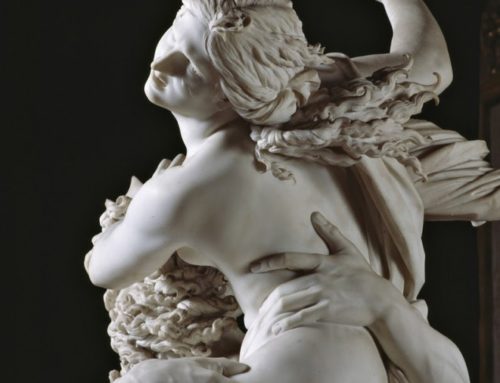by Claudia Viggiani
translated by Steve Barley
Have you ever seen the feet in Caravaggio’s paintings? But of course you have. Everybody mentions the famous “dirty feet” which can be seen in some of his most emblematic works such as the Crucifixion of Saint Peter in Santa Maria del Popolo and the Madonna of Loreto in Sant’Agostino in Rome; the Entombment of Christ in the Vatican Museums, the Madonna of the Rosary in Vienna and the Death of the Virgin at the Louvre. Those feet which are so important, became in Caravaggio’s artistic production a kind of propaganda, a form of institutionalized public communication appropriate to the promotion of a very significant Christian message.
Michelangelo Merisi – born in Milan where he was also baptized – spent great part of his childhood in the ultra-catholic town of Caravaggio where, in 1432, a woman by the name of Gianetta had witnessed an apparition of the Virgin. Raised and educated according to catholic- pauperistic beliefs in the spirit of St. Charles Borromeo, in Milan the young Caravaggio was exposed to new schools of thought and guided in his education at the various parishes of his uncle-chaplain: the same uncle who later recommended him to Cardinal Del Monte at Rome.
It was in this way that Caravaggio formulated his vision of the world inspired by pauperism, building an ideology which firmly opposed such aspects of the Counter-Reformation which he held to be too dogmatic or distant from the needs of those in poverty.
Caravaggio moved to Rome when he was more or less 20 years old and lived there until his self-exile in1606 after having been sentenced to death for murder. With the establishment of the Counter-Reformation in the Rome of this period, the problem of pauperism – those who affirmed that the survival of some depended on the help of others – was widespread, above-all because the poor, who often begged, held no interest for church reformers who considered them “ignorant of christian truth” and who were therefore seen as sinners or even as criminals.
For this reason, even in the Vatican, a network current of pauperism began to spread, its sustainers including powerful cardinals who employed Caravaggio or sustained him in his work.
The naked, dirty feet of Caravaggio’s saints are therefore the feet of those who believed that Jesus, son of God, was “made man” and had lived in poverty. They are the feet of his disciples, the feet of his friends, the feet of the mother of that same Christ who was at the same time both divine and human; they are the feet of the models to which true Christians aspire.
Even the Augustinians, who at the time were the most powerful and cultured confraternity in Rome, recognized this intense sincerity, its modesty and moderation, and the rawness of human existence touched by the divine presence in Caravaggio’s paintings. Such was this acceptance that they agreed no less than twice to house the painter’s works in their places of worship. Works which are still perfectly preserved in the Augustinian churches of Rome: Santa Maria del Popolo and Sant’Agostino. And in the three paintings by Caravaggio to be found in these churches, of dirty feet there are many.
Image:
Caravaggio, Madonna of the Rosary, detail, c. 1607, Kunsthistorisches Museum, Vienna




